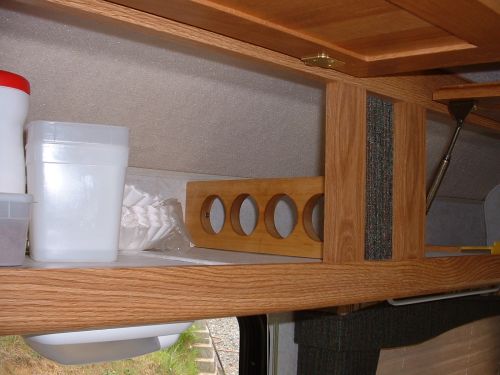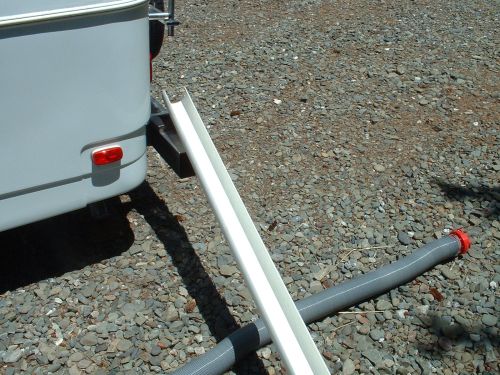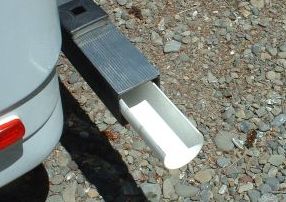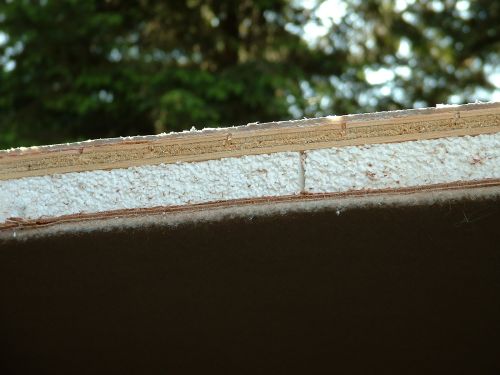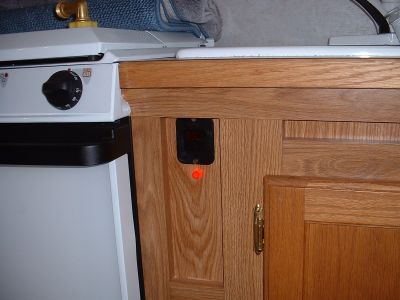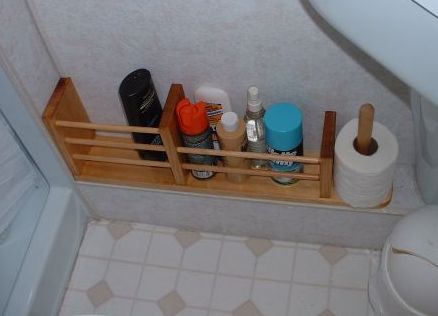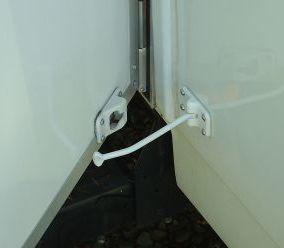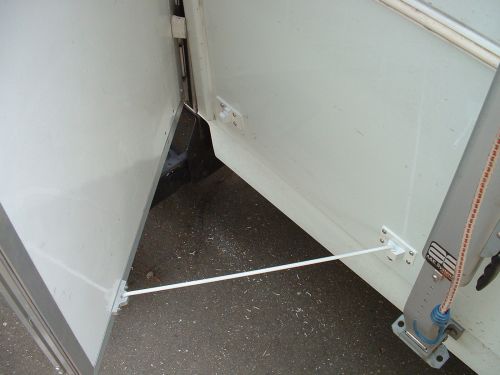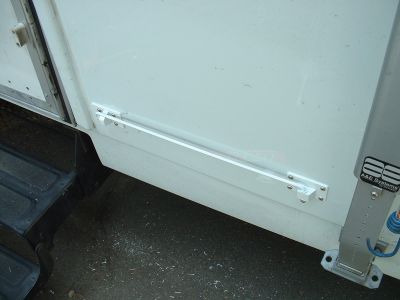|
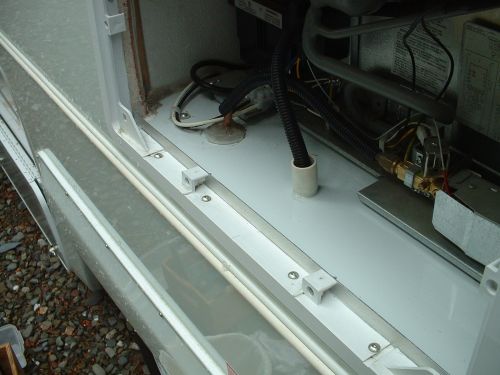
|
Inside the
Dometic
refrigerator there's a drip catcher under the cooling fins that is
piped down and behind the unit. It's supposed to be connected
to
a little hole in the outer door, but since this never stays hooked up
it just drips in the back. Here, I've drilled straight down
into
the wheel well between the wheels, installed a short length of 3/4" pvc
pipe, and siliconed everything up. The other end comes out
right
in the center of the wheel well. A 45 deg ell pointing to the rear
should help keep mud, etc. out of the end of the pipe.
Note the addition
of
an aluminum strip screwed across the sill to help keep outside water
from running in.
This all started when I noticed signs of water having set inside the
compartment. I suspect some of this came from spray through
the
louvers during a rain storm. Looking closely at the
louvered
door, you can see that spray from high winds or passing trucks might
blow up and into this area.
|
